What Is Talcum Powder?
Talcum powder is a refined form of talc and is used as a lubricant or absorbent. Talc is a mineral that has historically been used in personal care products, baby products, and cosmetics.
How Is Talc Contaminated with Asbestos?
Talc is mined from the earth and is often found next to asbestos deposits. Because the two are found so close together, talc may contain trace amounts of asbestos.
Is Asbestos Contamination Dangerous?
Health officials and regulators consider talcum powder products to be safe for consumer use. However, the use of talcum powder has been linked to ovarian cancer and other types of health disorders. Talcum powder that has been contaminated with asbestos may expose the user to the risk of mesothelioma. Some studies have proposed a link between long-term talc use or exposure and mesothelioma, though no confirmation has been shown.
Asbestos has been banned from talcum powder products since the 1970s, but the U.S. Food and Drug Administration (FDA) does not require consumer product manufacturers to perform routine testing to ensure products are asbestos free. Within the past several years, asbestos has been found in makeup products that contain talc, including some types of “play” makeup marketed toward children.
What Talc Products Were Contaminated With Asbestos?
In the 1970s, a Mount Sinai Hospital report revealed that 10 of 19 talc-containing consumer products also contained asbestos.
These products included:
- Cashmere Bouquet Body Talc
- Coty Airspun Face Powder
- Yardley Invisible Talc
- Yardley Black Label Baby Powder
- Bauer & Black Baby Talc
- English Leather After Shave Talc
- Faberge Brut Talc
- Mennen Shave Talc
- Rosemary Talc
- ZBT Baby Powder with Baby Oil
Was There a Ban on Asbestos Use in Products?
Asbestos was banned in many consumer products in the 1970s, and all products containing talc should have been asbestos-free after that point. However, in 2018, a report by the U.S. Public Interest Research Group (USPIRG) showed that declaring a ban on asbestos was not adequate. The report revealed that nine makeup-type products sold by Claire’s fashion accessory retailer were contaminated with asbestos. Claire’s recalled the products but denied the report and later filed for bankruptcy in the same year.
Also in 2018, retailer “Justice” was forced to recall eight products from their “Just Shine” makeup line intended for tween girls due to asbestos contamination. USPIRG reported that they also tested makeup products by several well-known companies, including Cover Girl and L’Oréal, and did not find asbestos contamination.
What Are Mesothelioma and Pleural Mesothelioma?
Mesothelioma is an aggressive, rare malignant cancer that is considered to be fatal but takes years to develop. Mesothelioma occurs when asbestos causes tumors to grow in the “mesothelium” layer of tissue that surrounds the lungs, abdomen, or heart.
There are three types of mesothelioma:
- Pleural mesothelioma – tumors form in the mesothelial layer inside of the chest cavity, surrounding lungs, or pleura
- Peritoneal mesothelioma – tumors form in the mesothelial layer which lines the abdominal cavity or peritoneum
- Pericardial mesothelioma – tumors form in the mesothelial layer of the lining of the heart (pericardium)
Pleural mesothelioma is the most common type of mesothelioma and accounts for about 80% of all mesothelioma cases.
What Are the Symptoms of Pleural Mesothelioma?
Pleural mesothelioma affects the tissues around the lungs.
Symptoms of pleural mesothelioma may include:
- Chest pain
- Painful coughing
- Shortness of breath
- Abnormal lumps of tissue under the skin on the chest
- Unexplained weight loss
How Does Asbestos Lead to Mesothelioma?
Mesothelioma occurs when the needle-like fibers of asbestos become lodged in the mesothelial tissue lining. They are not easily removed, and over a number of years, may cause tissues to become inflamed and tumors to form. Once mesothelioma tumors develop, the cancer is generally considered to be fatal.
Mesothelioma may take decades to develop. Because mesothelioma has such a long latency period, people who were exposed to asbestos before it was banned in consumer products may be just now finding out they have mesothelioma.
How Is Talcum Powder Linked to Mesothelioma?
Even though the U.S. Food and Drug Administration required that talcum powder products be asbestos-free in the 1970s, they cannot guarantee that today’s talcum powder products do not contain asbestos. In 2009 and 2010, the agency tested a number of talcum powder samples, and no asbestos was found. However, they acknowledged that only four suppliers provided samples and stated that the results of the study could only prove that those talc-containing products tested were not asbestos contaminated.
A number of consumer and healthcare products have historically been made with talcum powder, the most notable being Johnson’s Baby Powder. Johnson & Johnson no longer uses talc in their products and has chosen to substitute it with cornstarch. Some companies still make products that contain talc. Most shiny or shimmer-type makeup may still use talc to improve appearance and texture.
Exposure to asbestos can happen in a variety of ways. Talc-based products that have been contaminated with asbestos may lead to mesothelioma. Talc-asbestos exposure may also occur in people who work in the cosmetics or beauty industry in manufacturing or client care. Exposure to talc contaminated with asbestos may also occur in industrial settings. Industrial formulations of talcum powder are used to make a variety of products including paper, paint, plastics, rubber, and even pharmaceuticals. Talc is used in other industries such as wastewater plants to purify water, and workers in factories and mines may have been exposed to asbestos-contaminated talc while at work.
Asbestos-laden talc that becomes airborne may enter the body and lodge in the lungs to cause pleural mesothelioma.
Are There Lawsuits Because of Mesothelioma Linked to Talcum Powder?
Johnson & Johnson and other talcum product manufacturers have already faced a number of ovarian cancer lawsuits filed by women or families of those who claim that Johnson’s Baby Powder or Shower-to-Shower powder caused their cancer. Though the lawsuits are separate, some people who have been diagnosed with pleural mesothelioma have also filed lawsuits against talcum powder manufacturers.
What Are the Allegations in the Talcum Powder Pleural Mesothelioma Lawsuits?
Pleural mesothelioma talc lawsuits claim that the manufacturers knew their talc products were contaminated with asbestos but continued to sell them anyway. People who used talcum powder products that may have been contaminated with asbestos and were diagnosed with pleural mesothelioma should seek legal assistance. Past medical injury and product liability lawsuits have resulted in compensation for lost wages, pain and suffering, medical costs, loss of consortium, and wrongful death if the person has died.
Are There Talcum Powder Pleural Mesothelioma Lawsuit Settlements?
At least one multi-million-dollar judgment has already been awarded in favor of the victim. In April of 2018, a New Jersey man and his wife were awarded $117 million by a jury after he claimed that talcum powder in Johnson’s Baby Powder and Shower-to-Shower powder caused his pleural mesothelioma.
How Do I Find a Talcum Powder Pleural Mesothelioma Attorney?
If you or a loved one have been diagnosed with pleural mesothelioma, you should consult an attorney. Seeger Weiss, LLP, has an experienced team of attorneys who will provide you with a free consultation.
Notwithstanding claims relating to this product, the drug/medical device remains approved by the U.S. FDA.
Sources
- Center for Food Safety and Applied Nutrition. (n.d.). Talc. U.S. Food and Drug Administration. Retrieved September 30, 2022, from https://www.fda.gov/cosmetics/cosmetic-ingredients/talc
- Gordon, R. E., Fitzgerald, S., & Millette, J. (2014, October). Asbestos in commercial cosmetic talcum powder as a cause of mesothelioma in women. International journal of occupational and environmental health. Retrieved September 30, 2022, from https://www.ncbi.nlm.nih.gov/pmc/articles/PMC4164883/
- Mayo Foundation for Medical Education and Research. (2020, October 20). Mesothelioma. Mayo Clinic. Retrieved September 30, 2022, from https://www.mayoclinic.org/diseases-conditions/mesothelioma/symptoms-causes/syc-20375022
- Pericardial mesothelioma cancer: Treatment, prognosis & diagnosis. Mesothelioma.com. (2021, August 13). Retrieved September 30, 2022, from https://www.mesothelioma.com/mesothelioma/types/pericardial/
- Whitmer, M. (2022, February 9). Asbestos in makeup: How it gets there & how to avoid IT. Mesothelioma Center – Vital Services for Cancer Patients & Families. Retrieved September 30, 2022, from https://www.asbestos.com/products/makeup/
- Willingham, A. J. (2016, May 3). What’s the tie between Talc and cancer? CNN. Retrieved September 30, 2022, from https://www.cnn.com/2016/02/25/health/talc-safety-explainer-hln/


